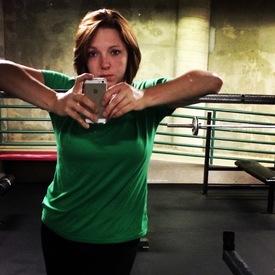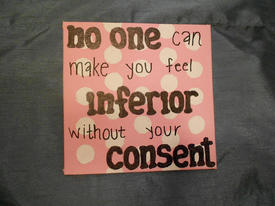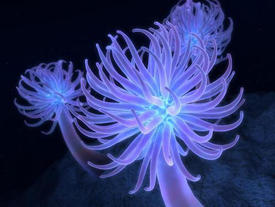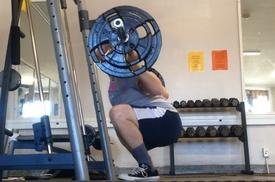Holy sodium batman! How do you cut it down? It's everywhere!

almartini11
Posts: 35 Member
I recently added sodium to my diary and was shocked at how much there is in everything. Particularly at noodles and company, I wanted to get a soup and salad, but when I put it in to check it I was 1000 over! Just from those! Is the recommended set low? I love salt, especially on meats, and I always thought things like soup and salads didn't have that much. Now I wonder what I have been doing to myself this whole time. Just wondering if anyone has any tips, talk about feeling salty!
0
Replies
-
I wouldn't sweat it unless you have high blood pressure0
-
There is always a lot of sodium in restaurant and packaged foods. When you cook at home or add salt to raw ingredients, it would be hard to equal the amount you would find in a bowl of restaurant food.
But like drmerc said, if you don't have high blood pressure, it's probably not worth worrying about. Drink lots of water and try to get some potassium in to balance it out.0 -
I watch mine too, and was also shocked to find how much sodium is in a lot of the foods I was eating. Restaurant food tends to be particularly high, as are pre-packaged stuff, like store bought dressings, sauces, etc.
I still go over on my sodium, but don't have health issues with it - I just track it to be aware of it, and I try to drink more water if it's a high sodium day.0 -
No, the MFP default for sodium is not too low. In fact, it's too high according to all other health websites (mayo clinic, AMA, etc.) They say the max should be 2,300mg per day. If you have underlying health issues like high blood pressure then the max is between 1,500 - 1,800 mg per day.
You need to avoid processed foods (pretty much anything in a can, box, package) and most restaurant dishes. Prepared soups are the WORST. Homemade soup is the only way to go.
Most sodium comes from prepared/processed foods and not the little bit of table salt you add to your meats, etc.0 -
The best way to cut sodium is to cut as much as possible that comes in a can or a package. All foods will naturally have a little bit of sodium but it's the 'processed' foods that kick our butts. A few things that will help..
1. Cook from scratch - do NOT add extra salt when you cook, don't salt your 'pasta water' or vegetable water etc..There are hundreds of OTHER spices that can be used for flavoring food. Try new ones if you don't already.
2. Don't drink soda or other 'not water' drinks. Sodium is used in soda to make you more thirsty so you will buy more soda Actually quite a few of the bottled water varieties also add sodium for the same reason.
Actually quite a few of the bottled water varieties also add sodium for the same reason.
3. Avoid using packaged foods or if you must use something look for 'low sodium' or 'no added salt' varieties. Sodium is used in a lot of packaged foods as a preservative but many companies offer low sodium versions of products.
My sodium is set to less than half of what MFP has as default. I rarely go over. My diary is open if you want to peek.0 -
Sodium is used as a filler, preservative and taste enhancer. Also there are sooo many kinds of it. the best way to cut it out is to avoid processed food as much as possible. Make your own food from scratch, or reading lables more helps too.
Example: i made my own spaghetti sauce using no salt added can tomatos(or even fresh ones) added loads of fresh veggies and lean meat. Seasoned with spices, as many fresh as i could get. the results...i could have up tp 2 cups of that sauce and still have less than half the sodium in half a cup of store bought jarred spaghetti sauce.
Im also convinced the more salt you eat, the more your body wants...not unlike an addiction. It's like your taste buds get used to it and needs more to be able to taste it.
I work hard to eliminate salt whereever i can, but i know i won't get rid of it entirely. (i still 'have to have it' on frresh tomatos and eggs) but then again, your body does need some salt in it. it is a neccessary evil.0 -
Thanks everyone! Just trying to look out for it because there is a history of heart disease in my family, I don't have high blood pressure now but I definitely don't want it either ;-) This is great advice! I am going to research it more, too.0
-
avoid processed and packaged as much as possible for sure, more whole food. They add sodium to everything, it can really add up.0
-
Thanks everyone! Just trying to look out for it because there is a history of heart disease in my family, I don't have high blood pressure now but I definitely don't want it either ;-) This is great advice! I am going to research it more, too.
Sodium temporarily elevates your blood pressure, its not a cumulative effect0 -
Weird. I don't track it any more because I was usually at less than half the amount. It seems easy to avoid.0
-
Good 4 U for watching your sodium intake. Agreed - processed foods are the culprit. With beans, you can rinse them, but there's not much you can do about soup (except make your own). Knowledge is power! Read every label!!0
-
I have read in more than one place that it is important not to over do sodium BUT it's more important to have a good sodium to potassium ratio.
Try eating more high potassium foods (unless you have kidney issues and of course you'd have a diet plan with a doctor).
I regularly eat/drink for potassium:
Low sodium V8
Spinach
Sweet potatoes
Broccoli
Tomatoes
Bananas
Chicken (believe it or not)
Apples
DO NOT however take a potassium supplement unless expressly told by a doctor. Those things can be damaging to your system!
Of course like everyone else said avoid processed stuff as much as possible and if you get canned foods get them salt-free. I was blown away by how much sodium is in most tomato stuff, even if it's considered healthier! Salsa blew my mind lol.
http://www.harvardschoolofpublichealth.org/nutritionsource/salt/sodium-potassium-balance/
http://www.huffingtonpost.com/2011/07/11/potassium-salt-diet-dangers_n_895124.html
http://archinte.jamanetwork.com/article.aspx?articleid=1106080
http://www.scientificamerican.com/podcast/episode.cfm?id=sodium-and-potassium-together-deter-11-07-120 -
I think I avoid canned, packaged, processed... I almost never add salt to things... Yet my sodium is still high. I need to take a closer look at the stuff I buy to make homemade stuff, I guess.
I did notice my protein powder seems high in sodium.0 -
When cooking with canned foods (eg tomatoes) use low-sodium versions; if beans or tuna, rinse those suckers for a good while under the tap. Bouillon, same, low-sodium. Use only as much salt in cooking as is required to bind flavours.0
-
Yes!! read, read, read!
Real salt is very good for the body... Try Himalyan salt. I will post an article on my group, the Skinny on Obesity.0 -
Another place I notice sodium is in cold cuts - sliced turkey, chicken etc for sandwiches. The amount there really surprised me. I plan to just cook my own chicken breasts and use that for sandwiches from now on.0
-
The best way to cut sodium is to cut as much as possible that comes in a can or a package. All foods will naturally have a little bit of sodium but it's the 'processed' foods that kick our butts. A few things that will help..
1. Cook from scratch - do NOT add extra salt when you cook, don't salt your 'pasta water' or vegetable water etc..There are hundreds of OTHER spices that can be used for flavoring food. Try new ones if you don't already.
2. Don't drink soda or other 'not water' drinks. Sodium is used in soda to make you more thirsty so you will buy more soda Actually quite a few of the bottled water varieties also add sodium for the same reason.
Actually quite a few of the bottled water varieties also add sodium for the same reason.
3. Avoid using packaged foods or if you must use something look for 'low sodium' or 'no added salt' varieties. Sodium is used in a lot of packaged foods as a preservative but many companies offer low sodium versions of products.
My sodium is set to less than half of what MFP has as default. I rarely go over. My diary is open if you want to peek.
I go over my sodium as well, so looked at your diary for some ideas. I know you said you set yours to less than half of what MFP suggests, but in quickly looking at what you've logged for November, you've gone over more days than not (a lot days by a considerable amount). Did you mean that you don't go over the originally suggested MFP amount?0 -
The easiest way is to cook your own food, using fresh, non-packaged food. And to not be afraid of salt, as others have said. Use sea salts to flavor your food while you cook so that you can control the amount of extra sodium going in.
Really, once I switched from lunch meats, microwave meals, and other packaged foods and started just cooking all of my own food I started keeping my sodium at 1500 or lower without even trying or thinking about it as I went about my day.
I don't do it for blood pressure reasons or anything like that, I just seem to be really sensitive to it, water-retention-wise. Whenever I have a high sodium day, even if my calories are way under, I go up a couple of pounds for the days following until it flushes back out.
I also eat a lot of high-potassium foods. And I have all of my own entries for fresh fruits and vegetables that I entered from nutritiondata.self so that they have all of the accurate potassium levels on them (unlike a lot of the ones in the database) so I can actually track it better.0 -
My sodium is set to less than half of what MFP has as default. I rarely go over. My diary is open if you want to peek.
Are you sure you're reading your diary correctly? In just the last week or so you've been over your own set sodium level all but once. And more often than not you were over the default MFP setting. Many days you were over 3,000mg, some upwards of 3,500-3,900mg of sodium.0 -
There is always a lot of sodium in restaurant and packaged foods. When you cook at home or add salt to raw ingredients, it would be hard to equal the amount you would find in a bowl of restaurant food.
But like drmerc said, if you don't have high blood pressure, it's probably not worth worrying about. Drink lots of water and try to get some potassium in to balance it out.
THIS.
More home-cooked food and lots of fluids.0 -
Yes it is everywhere... Blood pressure was becoming an issue for me and just four months later the diastolic is down more than 10 points...0
-
I also added sodium to my profile just for S's and G's...wow! I was so shocked at how much sodium I take in per day, that I decided to remove the sodium tracker from my diary and pretend I never saw it lol! Seriously though, I am now aware that I really need to try to cut down on the fast food aka worst offender.0
-
Non-processed foods... I've noticed the more foods that I eat that are not processed the less sodium I consume. However, my nutrionist told me not to worry unless I"m over 3500mg0
-
Rinsing and not using the liquid in the can will eliminate some sodium but the beans have already absorbed a good amount of sodium... You can soak them in cool water after rinsing them and osmosis will work to get some of the sodium out but it is far better to make your beans from scratch if sodium is a real concern.Good 4 U for watching your sodium intake. Agreed - processed foods are the culprit. With beans, you can rinse them, but there's not much you can do about soup (except make your own). Knowledge is power! Read every label!!0 -
I searched this up too, MFP recommends 2500, which is actually the healthy daily MAX
A very healthy person generally wants to have 1300 - 1800 mgs
However, this probably won't really make a huge difference unless you are constantly consuming a lot of sodium, it could be bad in the long run
ETA: To cut down the simplest thing to do is to always look for the reduced sodium items (soy sauce, pb, etc) or replace some items with high sodium (balsamic vinegar) with lower sodium items (red wine vinegar)
I used to always have chickpeas with 3 tbsp balsamic but now i have 1 tbsp balsamic with 2 tbsp red wine and it tastes the same!0 -
I had tracked mine when I first started but now I"m more aware of what I should have and what is in stuff so I'll try to find things with lower sodium. It's more habit now for me but it also helps that my boyfriend and I check everything anyways cause his dad can't have much at all (heart issues) so since we make a lot of food on the weekends for them for football games, it's a bit easier for me.
Edited to say I do still track it actually, I hadn't for awhile but wanted to see if I was doing any better with it so I added it back in (and I am thankfully)0 -
I looked at it too. Yes, she has her sodium level set to 1,250mg per day which is half of MFP's default of 2,500mg.The best way to cut sodium is to cut as much as possible that comes in a can or a package. All foods will naturally have a little bit of sodium but it's the 'processed' foods that kick our butts. A few things that will help..
1. Cook from scratch - do NOT add extra salt when you cook, don't salt your 'pasta water' or vegetable water etc..There are hundreds of OTHER spices that can be used for flavoring food. Try new ones if you don't already.
2. Don't drink soda or other 'not water' drinks. Sodium is used in soda to make you more thirsty so you will buy more soda Actually quite a few of the bottled water varieties also add sodium for the same reason.
Actually quite a few of the bottled water varieties also add sodium for the same reason.
3. Avoid using packaged foods or if you must use something look for 'low sodium' or 'no added salt' varieties. Sodium is used in a lot of packaged foods as a preservative but many companies offer low sodium versions of products.
My sodium is set to less than half of what MFP has as default. I rarely go over. My diary is open if you want to peek.
I go over my sodium as well, so looked at your diary for some ideas. I know you said you set yours to less than half of what MFP suggests, but in quickly looking at what you've logged for November, you've gone over more days than not (a lot days by a considerable amount). Did you mean that you don't go over the originally suggested MFP amount?0 -
Avoid prepackaged foods, especially frozen or canned. Almost anything that is convenient to make or buy is loaded with sodium. Even without blood pressure or heart issues, sodium can make you very bloated. I would recommend making your meals as much as you can. If you limit your "fast foods" to only one meal a day, your sodium will most likely be under 2,500. And no, the goal is not set low at all. From every source I've researched, maximum sodium intake should be around 2,000-2,500mg.0
-
Honestly, I sweat it. As in, I sweat a lot and lose the salt. In the summer I actually have to take electrolyte tablets if I'm working out or else I get stiff and exhausted. For most people without high blood pressure, there is no reason to worry about sodium and the 2,500 limit is probably lower than it needs to be. Also, some emerging science suggests it's actually low potassium that does us in, and high-sodium packaged foods happen to have less potassium. So, if you eat lots of veggies, the salt isn't so bad.
Check out this article: http://healthland.time.com/2011/07/12/salt-how-bad-is-it-really/0 -
Truly, the only way to drastically cut sodium is to reduce how many times/week you eat out and prepare everything at home as fresh as possible. A few months back I cut out everything from my diet that was boxed, bagged, or canned (with a few exceptions) and didn't eat out for a month. For the first three days I couldn't stay out of the bathroom for all the excess water my body was able to flush out. I felt fantastic, though. Much less fatigued. As soon as I am able to get into my own place again (I'm staying with my aunt right now), I plan to go back to that. It was hard to cut out all that junk at first, but it was worth it.0
This discussion has been closed.
Categories
- All Categories
- 1.4M Health, Wellness and Goals
- 398.3K Introduce Yourself
- 44.7K Getting Started
- 261K Health and Weight Loss
- 176.4K Food and Nutrition
- 47.7K Recipes
- 233K Fitness and Exercise
- 462 Sleep, Mindfulness and Overall Wellness
- 6.5K Goal: Maintaining Weight
- 8.7K Goal: Gaining Weight and Body Building
- 153.5K Motivation and Support
- 8.4K Challenges
- 1.4K Debate Club
- 96.5K Chit-Chat
- 2.6K Fun and Games
- 4.7K MyFitnessPal Information
- 17 News and Announcements
- 21 MyFitnessPal Academy
- 1.5K Feature Suggestions and Ideas
- 3.2K MyFitnessPal Tech Support Questions




















